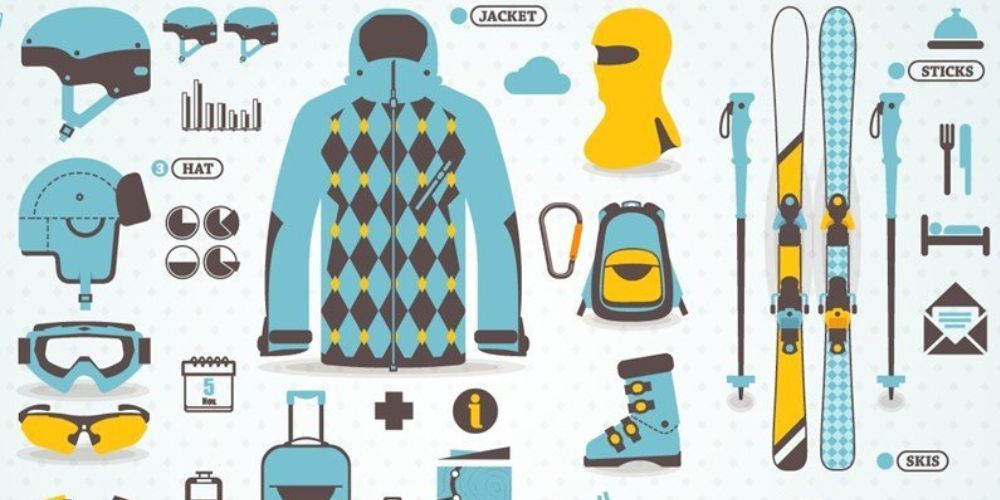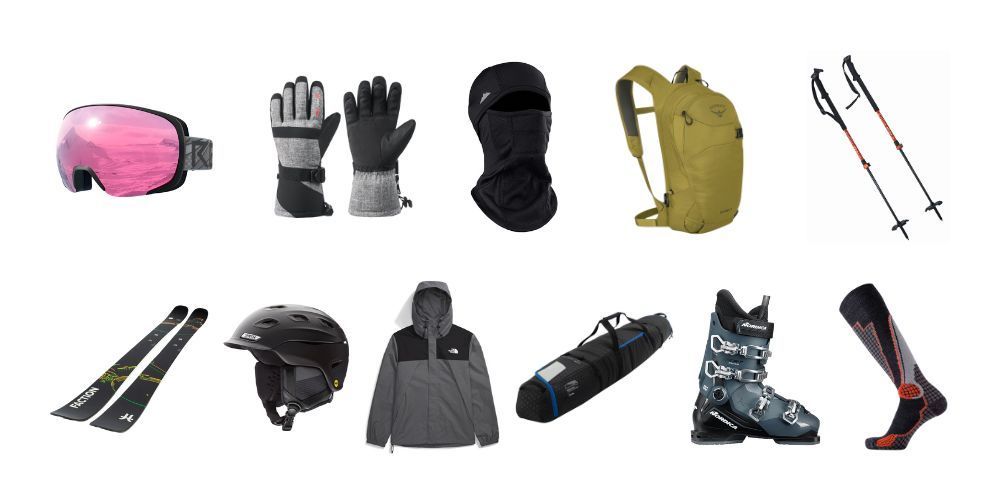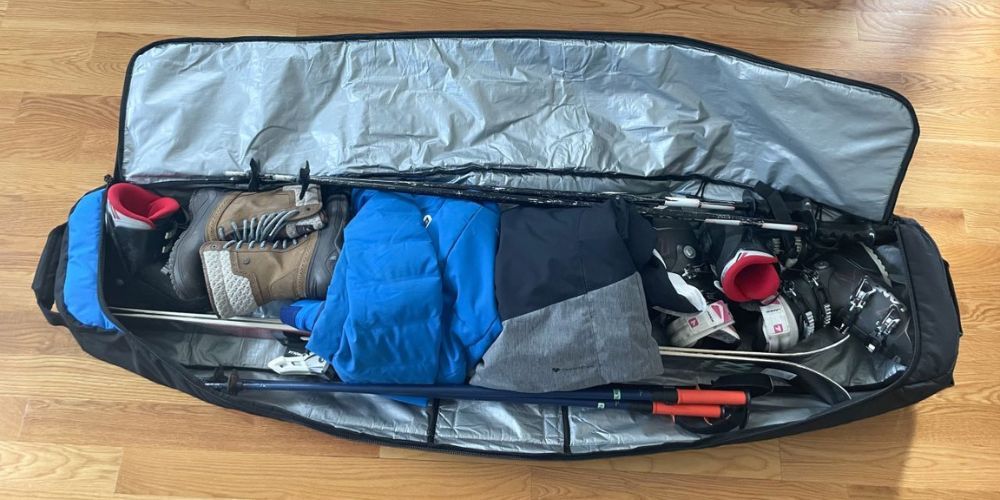Packing Tips for a Ski Trip: Essential Gear and Clothing Checklist
October 6, 2024
Planning a ski trip is more than just booking tickets and choosing destinations; it requires meticulous preparation to ensure each moment on the slopes is comfortable and memorable. Skiers often feel a unique blend of excitement and anxiety as they gather their gear—fearing they might overlook something crucial amid the flurry of preparations.
From my own journeys, I’ve unearthed strategies and tips that save both time and space without compromising on essentials. Picture stepping into powder-fresh snow with a trusted pair of moisture-wicking base layers keeping you dry and warm underneath your weatherproof jacket; this level of comfort doesn't happen by chance. It’s born out of careful planning, which we will explore step-by-step beginning with the fundamental pieces every skier needs in their suitcase.
When packing for a ski trip, it is crucial to focus on layering by including moisture-wicking base layers, insulating mid-layers, and waterproof outer layers. Additionally, consider using packing cubes for organization and bring versatile clothing items that can serve multiple purposes, maximizing utility while minimizing bulk.

Ski Trip Packing Essentials
When it comes to skiing, your equipment can make all the difference in both comfort and safety. Beyond the basic layers, investing in quality gear ensures you’re protected from the elements and equipped for success on the slopes.
First on your packing list should be high-quality ski goggles. These are essential for visibility in bright conditions and protecting your eyes from wind and snow glare. You want a pair with UV protection and anti-fog features—brands like Oakley or Smith are trusted choices in this realm.
Moreover, don't overlook the importance of a good helmet if you don’t already own one. Unlike casual winter hats, a ski helmet is designed to absorb impacts and has ventilation features to keep you comfortable while descending the mountain. While some resorts do offer rentals, bringing your own helmet ensures a better fit, making it more effective for safety purposes.
Another item that may not come to mind is a neck warmer or balaclava. This piece of gear can shield your face and neck from biting cold winds—a real relief when you're racing down slopes at high speeds. Choose breathable materials to ensure you stay warm without overheating.
Next up is your accessories. Investing in quality gloves or mittens cannot be overstated; keeping your hands warm yet functional is vital. Consider purchasing a heated mitt if you tend to get unusually cold hands, as companies like Hestra offer options with battery-heated features that can transform chilly days into enjoyable experiences.
Key Gear Items:
- Ski Goggles: Look for UV protection and anti-fog features.
- Ski Helmet: Essential for safety; ensuring a good fit is paramount.
- Neck Warmer/Balaclava: Protects against cold winds.
- Gloves/Mittens: Heated options available for extra warmth.
Once you have these essential pieces lined up, it's time to consider additional important necessities that will enhance your experience on the slopes.
Must-Have Gear and Equipment
When planning your ski trip, investing in the right equipment isn’t just a matter of convenience; it’s essential for both safety and enjoyment. A well-fitted helmet is crucial; it protects your head and allows for a wonderful sense of security as you navigate down the slopes. Companies like Giro and Smith offer helmets that combine comfort with proven safety features, tailoring their designs to protect against various impacts while ensuring breathability.
With so many styles and sizes available, trying on a few can help find the perfect fit.
In addition to a helmet, goggles are equally vital. Opting for high-quality brands such as Oakley or Smith ensures clear vision in changing weather conditions, which is especially important when you need to spot potential obstacles or gauge slope angles. Investing in goggles with good anti-fogging features will be a game changer, allowing you to enjoy your runs without constantly stopping to wipe condensation away.
Another pivotal piece of gear is your ski boots. The importance of having properly fitted boots cannot be understated, as they affect your control on the slopes and overall comfort during long hours of skiing. While brands like Salomon and Rossignol are popular for their snug fits and excellent responsiveness, I’ve learned that visiting a specialized store where you can get fitted by an expert makes all the difference.
You'll leave with a pair that feels like a second skin — comfortable yet supportive.
As for poles, they often get overlooked, but their role in maintaining balance should not be underestimated. A reliable set from manufacturers like Black Diamond or Leki can provide crucial support on steeper terrains or when traversing across snow-covered trails. Make sure to choose the right length: when standing barefoot, your arm should be at roughly 90 degrees when holding the pole upside down by its grips.
Lastly, whether you're skiing or snowboarding, selecting the right skis or snowboard makes an undeniable difference in performance. Brands like Burton and K2 manufacture equipment tailored to suit various skill levels and skiing styles. However, if you're tight on space or wish to travel light, it's often wise to consider renting your skis or snowboard at your destination. Many resorts offer high-quality rental gear that's maintained regularly, making it easy to hit the slopes without hauling extra baggage.
Many skiers I met on previous trips swear by rental gear. They’ve found that resorts often provide options that rival personal gear while avoiding the burdensome luggage fees at airports—benefits worth considering!
Understanding which gear enhances safety and performance is key to preparing for an unforgettable adventure on the slopes. Now it's time to discover how to streamline your packing process for optimal efficiency.
Efficient Packing Strategies
When it comes to a successful ski trip, packing efficiently is all about maximizing space while keeping your essentials safe and organized. One key element of efficient packing is the use of compression bags. These handy tools allow you to pack bulky items like your ski jacket, pants, and mid-layers without consuming unnecessary space in your suitcase. By squeezing air out, the bags reduce volume significantly, making room for other critical items you may need while away.
Another technique worth considering is layering your clothing for travel. Instead of stowing away heavy items in your bag, why not wear them? Donning your warm jacket while traveling can lighten your luggage considerably. Not only will this save space and weight, but it also allows you to be comfortable upon arrival as you're already geared up for the cold.
Think of smaller items in your gear, such as goggles or gloves; they often get lost amid bulky jackets or pants. A clever tip here is to put small items inside larger ones—for example, wrapping your goggles in a pair of socks can offer both protection from scratches and help with organization. You’d be amazed at how many fragile items can be safeguarded this way.
Investing in a dedicated ski bag is another wise choice for serious skiers. These specialized bags provide ample room for multiple items including skis, poles, and even helmets. Beyond just storage capacity, ski bags typically come with extra padding which protects your equipment during transit—this becomes invaluable if you're using public transport or flying.
Having equipped yourself with these smart packing strategies, let’s now focus on the art of dressing for the slopes to ensure optimal warmth and comfort while skiing.
Layering for Warmth
The importance of layering cannot be overstated, as it acts not only as insulation against the cold but also as a means to regulate body temperature during strenuous activity. Proper layering keeps you warm while preventing overheating, allowing you to enjoy your time on the slopes without unnecessary discomfort. Knowing how to layer correctly can make all the difference between a fun day hitting the powder and one spent shivering in the lodge.
Layering Steps:
Base Layer: Start with a moisture-wicking fabric like merino wool or synthetic blends. This first layer is essential as it sits against your skin and draws sweat away, keeping you dry. The fabric choice significantly impacts warmth, so aim for something snug yet breathable.
As someone who's spent countless winters trodding through snow-laden trails, I can assure you that the right base layer is crucial for comfort. Imagine skiing down a beautiful slope while simultaneously feeling like your skin is being battered by ice; that’s a recipe for disaster! Merino wool, known for its temperature-regulating properties, is often my go-to choice because it keeps me dry without overheating.
Mid Layer: Add a thermal layer such as a fleece or lightweight down jacket. The mid layer serves as insulation and should retain warmth while allowing for free movement. When choosing this layer, it’s wise to opt for materials that trap heat effectively but are still lightweight enough not to hinder your performance on the slopes.
Remember, too much bulk can limit mobility and ruin your skiing experience. A good fleece pullover offers comfort and can easily be stuffed into your backpack when you start warming up after a few runs down the hill.
Outer Layer: Finish with a waterproof and windproof ski jacket to block out harsh weather elements. This outer layer is your shield against wind, water, and snow. Look for jackets with features like adjustable cuffs, hoods, and ventilation zippers that allow you to regulate heat based on activity level and environmental changes.
Having endured biting winds whilst tackling difficult trails, I can vouch for the necessity of an effective outer layer. When that gust of icy wind hits you mid-descent, trust me; you'll be glad to have that barrier protecting you from the elements.
Understanding how to layer correctly sets a strong foundation for warmth and performance. To truly complete your ski wardrobe, consider the smaller yet equally essential accessories that will enhance your experience on the mountain.

Essential Accessories
While it may seem like skiing is all about the big-ticket items—like your ski jacket or those fancy boards—you might be surprised to learn that accessories play a crucial role in how enjoyable your experience will ultimately be. Small yet effective, these items ensure you stay warm, protected, and prepared throughout your adventure. Think of them as the unsung heroes of your ski trip.
Key Accessories:
Neck Warmer/Balaclava: This might seem like a simple piece of fabric, but wearing a neck warmer can mean the difference between having an enjoyable time and shivering in discomfort. These accessories shield your face from biting winds and drastically reduce the risk of windburn and frostbite. They fit snugly under helmets and provide much-needed warmth when you’re speeding down slopes.
Heated Gloves/Mittens: A bad experience while skiing often stems from cold fingers. Luckily, brands like Hestra understand this plight and offer heated glove options with built-in heating elements. On particularly frigid days, these gloves transform chilly hands into cozy ones, allowing you to focus on what really matters: enjoying the run rather than enduring it!
Sunglasses: While goggles are a must for slope action, don’t forget about a good pair of UV-protected sunglasses for off-slope fun or sunny breaks. When you hit up the lodge or venture into town, you'll want something stylish yet practical to shield your eyes from reflective sunlight on snow, keeping glare at bay.
Hand and Foot Warmers: Sometimes, even with all the gear on hand, freezing temperatures can prove challenging. That's where single-use heat packs come in handy! Tossing a few into your gloves or boots can turn what would have been an uncomfortable day into an enjoyable experience. They’re small enough to pack easily but mighty when it comes to keeping you warm.
Each accessory works in tandem with the others, creating a layered approach to warmth and protection that is essential when out in winter conditions. Neglecting these smaller items might leave you unprepared for unexpected weather changes or performance challenges. Packing wisely enhances not just your safety but your overall skiing experience.
With your essential accessories sorted, the next step involves navigating the logistics of your journey to the slopes.

Organizing Travel Logistics
Being well-prepared logistically not only streamlines airport check-ins but also sets the stage for a hassle-free experience at the resort.
Begin by thoroughly checking flight regulations and baggage policies to avoid unexpected fees or restrictions when you arrive at the airport. Each airline can have differing rules, especially regarding equipment like skis and snowboards. Don’t forget to weigh your luggage at home to ensure it falls within the airline's limits; a surprise overweight charge in line can be a real mood killer.
Booking your accommodations ahead of time is crucial, particularly during peak skiing seasons. Resorts often offer enticing package deals that include lift tickets and equipment rentals. By securing accommodations early, you not only save money but also guarantee a comfortable place to rest after an exhilarating day on the slopes.
Many seasoned travelers swear by arranging shuttle services from the airport in advance, which eliminates any chance of scrambling for transportation upon arrival. Imagine stepping off your plane and immediately hopping onto a waiting shuttle, rather than navigating public transport or ride-sharing apps in an unfamiliar area. It's one less worry so you can indulge in the excitement of your ski adventure.
An organized travel document holder can be invaluable. Prize all important documents—your ID, ski pass, accommodation information, and even your itinerary—in one easily accessible place. This way, you can breeze through check-ins and inquiries without fumbling through bags or pockets.
Establishing these logistical preparations early allows you to dedicate more energy toward what truly matters: enjoying your time on the slopes! So take a moment to map out the path of your journey beyond packing; this strategy ensures you enjoy every aspect of your ski trip without unnecessary interruption.
In summary, careful preparation is essential for an enjoyable ski trip. When everything's organized and easy to access, you're set to have an amazing time on the slopes while minimizing stress during your travels.
What essential clothing should I pack for a ski trip?
When packing for a ski trip, layering is key to staying warm and comfortable. Start with a moisture-wicking base layer to keep sweat away from your skin. Follow that with an insulating mid-layer like fleece or down to trap heat, and top it off with a waterproof and windproof outer layer, such as a ski jacket and pants. Don’t forget accessories like gloves, a warm hat, neck gaiter, and ski socks. Goggles or sunglasses are a must for eye protection, and a helmet is highly recommended for safety.
What gear do I need for a successful ski trip?
Essential gear for a ski trip includes skis or a snowboard, boots, poles, and bindings. Renting gear is a great option if you don’t own your own. You’ll also need protective gear, like a helmet and impact shorts, to prevent injuries. Don’t overlook the importance of properly fitted ski boots—they can make or break your day on the slopes. Other must-haves include a ski bag, a daypack for carrying essentials like water, snacks, and an extra layer, and hand warmers for extra comfort.
How can I make sure I pack efficiently for a ski trip?
Efficient packing for a ski trip involves planning ahead. Start by making a checklist of everything you’ll need, including clothing, gear, and personal items. Roll your clothes to save space and use packing cubes to keep things organized. Place heavier items, like boots, at the bottom of your suitcase. If you’re flying, consider shipping your skis or snowboard ahead of time to save hassle at the airport. Finally, pack travel-sized toiletries and any important documents like lift tickets, hotel reservations, or travel insurance.
Author: William Flaiz










